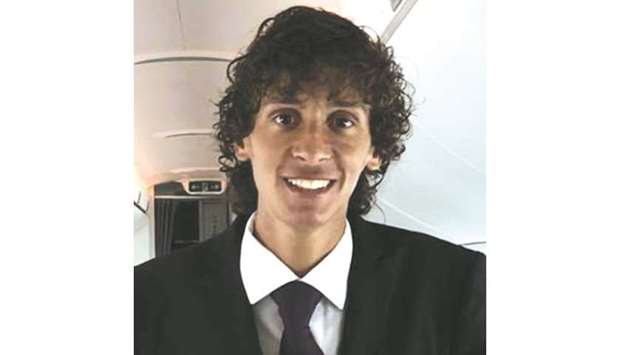The Russian regional aircraft was manufactured to compete with Bombardier’s CSeries (now Airbus A220) and Embraer’s E-Jet aircraft and intended to target the lower end of the size range for new technology regional jets. SSJ variants offer between 75-100 seats on the aircraft, whereas the A220 is in the 100-130 seat range, and E-Jet’s are in the 80-140 seat range.
The first 100-seat Sukhoi Superjet flew its maiden flight on 19 May 2009 and entered service in 2011. Its first airline operator outside Russia was Mexican low-cost carrier Interjet in 2013, and the first delivery to an airline in Western Europe was to CityJet in 2016. In Russia, it’s in service with several carriers who are encouraged to purchase ‘home-made’ aircraft.
Operationally, the Sukhoi Superjet has been erratic. Safety concerns with the Superjet, (Russia’s first post-Soviet passenger plane), emerged soon after its introduction in 2008. A large number of employees at the Siberia factory responsible for working on the assembly of SSJ aircraft were found to have faked their university engineering degrees.
In 2012, a Superjet crashed into a mountain in Indonesia during a sales demonstration flight, carrying 37 aviation industry executives, members of the media, and eight crew members, killing all aboard. Around the world, the safety of the new aircraft was being questioned. The investigation into the crash found that the aircraft’s automatic collision avoidance system (which would detect mountainous terrain) ‘was working’, but had been ‘ignored by the pilot’, who was ‘possibly distracted by his conversation with a potential customer for the aircraft’. As a result, pilot error was eventually concluded as the primary cause of the crash.
In late 2016, 11 of Interjet’s SSJ100s were ground due to a stabiliser (tail) defect. Russia’s Federal Air Transport Agency issued an airworthiness directive requiring “detailed inspection of the stabiliser joint straps and bracket attachment bands.”
Interjet’s CEO boasted that the airline negotiated a “sweet deal” with the Russian manufacturer for the SSJ100, admitting the cost of 10 Sukhoi Superjet aircraft was roughly equal to the pre-delivery payment for one Airbus A320. He was quick to tell media “We are satisfied. It is a money-making machine.” Shortly after, Interjet were forced to ground Superjet aircraft due to ongoing technical faults, and a frequent need for urgent maintenance. Sukhoi fixed the problem and the aircraft returned to service in January 2017, but further groundings followed, including more in early 2018. The Russian manufacturer paid Interjet $40mn in compensation, given Interjet’s maintenance expenses rose at a sharp, and costly rate.
Now, Interjet plans to change its fleet to focus on Airbus, following problems with its Russian aircraft. The low-cost airline will remove the majority (and eventually all) of its Sukhoi Superjet 100s that were acquired since 2013. The airline has suffered financially, and the continuous groundings of its Superjet fleet have contributed to the large losses declared by the Mexican low-cost carrier.
In Europe, the SSJ was ordered by just one airline, Ireland’s Cityjet.
CityJet wet-leased all of its SuperJet fleet to Brussels Airlines (who needed extra planes), but they have already started returning one aircraft to Sukhoi, owing to a frequent need for maintenance. The reoccurring technical faults has hurt Brussels Airlines operations and has left the airline frustrated with its wet-leasing deal.
In just one month, the Belgian airline was forced to cancel 92 flights operated by the Superjet, over just a 22 day period. A source at the airline said “technical problems” occur very frequently. To make matters worse, there are little airports with engineers who are qualified to work on the SSJ-100 — adding to the operational complexity of this jet.
Several new aircraft experiences ‘teething problems’ upon entry-into-service — and recent history will show how the 787 Dreamliner suffered during its first year of service, along with the Airbus A380. However, Western airlines have, for a long time been sceptical of the safety of Russian-built aircraft, and ongoing issues with the Superjet isn’t helping sell the aircraft. Aside from Cityjet, there has not been a single European airline operator of the aircraft. In The Americas, the Superjet aircraft’s last days at Mexican carrier Interjet are being planned.
Where Sukhoi’s operations are flawed, is maintenance. Sukhoi’s ‘after-care’ for airlines is weak, and costly for the customer. The manufacturer doesn’t have a single maintenance facility in the Americas, unlike Airbus, which services the rest of Interjet’s fleet, that has a strong maintenance presence, globally. In addition to this, being a very small player in the commercial airliner sector leaves the aircraft more vulnerable. It doesn’t help that Sukhoi jets are frequently operating to destinations where there are no Superjet trained engineers, given the lack of international interest in the Russian regional jet.
* The author is an aviation analyst. Twitter handle: @AlexInAir

Alex Macheras
